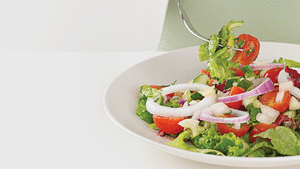What is Kale?
Kale is a dark-green, leafy vegetable that has a mild cabbage flavour, suggesting that it comes from the family of health-promoting cruciferous vegetables. Kale comes in several varieties, including curly kale, Tuscan kale (also known as dinosaur kale) and red Russian kale.
Why is it good for you?
Studies show that kale has antioxidant, anti-inflammatory, anticancer and cholesterol-lowering properties. For example, in a study of Chinese women, those who ate cruciferous vegetables daily had a 50 per cent lower risk of breast cancer. Research on European women found that eating just one weekly meal with cruciferous vegetables was linked to a 17 per cent reduced risk of breast cancer. And breast cancer survivors who regularly enjoy kale and its cousin vegetables (such as broccoli, cauliflower, arugula, watercress and radish) are known to have a lower risk of their cancer recurring.
Kale is packed with nutrients such as vitamins A, K and C; folate; dietary fibre; and minerals such as calcium and iron. Vegetables from the cruciferous family are our primary dietary source of sulphur-containing phytonutrients that powerfully stimulate the liver’s detox mechanism.
How to use it
- To get maximum benefit from kale, you need to chop, chew, blend or juice it. Be sure to include some raw or only lightly steamed kale.
- Kale’s bitter taste is toned down by the addition of extra virgin olive oil.
- Use kale raw in smoothies and to make pesto and salads (for salads, remove the ribs first, cut in strips and massage to soften).
- Bake kale chips with extra virgin olive oil.
- Steam kale and add it to burritos and risottos.
- Sauté kale and stir into cooked beans.
- Stir-fry kale with other vegetables.
Kale also freezes well, resulting in a sweeter taste when it thaws. Simply chop leftovers into 2-cm ribbons and place them in the freezer. They are perfect for adding to soups!







